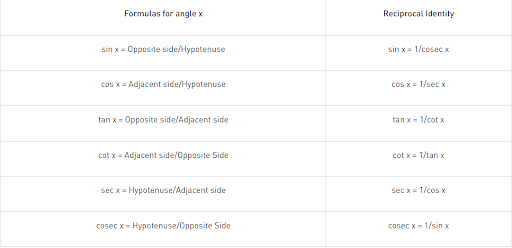The number of elements in the set \(S = \{ \theta \in [-4\pi, 4\pi] : 3 \cos^2(2\theta) + 6 \cos^2(\theta) - 10\cos(2\theta) + 5 = 0 \}\) is______.
Correct Answer: 32
Solution and Explanation
The correct answer is: 32
\(3 \cos^2(2\theta) + 6 \cos^2(\theta) - 10\cos(2\theta) + 5 = 0\)\(-\frac{10(1+cos2θ)}{2}\)
\(3\cos^2(2\theta) + \cos^2(\theta) = 0\)
\(\cos^2(\theta) = 0 \quad \text{or} \quad \cos^2(\theta) =\) \(-\frac{1}{3}\)
As \(\theta \in [0, \pi], \quad \cos(2\theta) = -\frac{1}{3} ⇒ 2 times\)
\(⇒\) \(\theta \in [-4\pi, 4\pi], \quad \cos(2\theta) = -\frac{1}{3}\)\(-\frac{1}{3}\) \(⇒\) 16 times
Similarly, \(\cos(2\theta) = 0\) \(⇒ 16\) times
∴ Total is 32 solutions.
Top Questions on Trigonometric Functions
- Evaluate: $ \tan^{-1} \left[ 2 \sin \left( 2 \cos^{-1} \frac{\sqrt{3}}{2} \right) \right]$
- CBSE CLASS XII - 2025
- Mathematics
- Trigonometric Functions
- The graph of a trigonometric function is as shown. Which of the following will represent the graph of its inverse?

- CBSE CLASS XII - 2025
- Mathematics
- Trigonometric Functions
- Solve for \( x \), \[ 2 \tan^{-1} x + \sin^{-1} \left( \frac{2x}{1 + x^2} \right) = 4\sqrt{3} \]
- CBSE CLASS XII - 2025
- Mathematics
- Trigonometric Functions
- The integral \[ \int_0^\pi \frac{8x}{4\cos^2 x + \sin^2 x} \, dx \text{ is equal to:} \]
- JEE Main - 2025
- Mathematics
- Trigonometric Functions
- The value of \( \cos \left( \sin^{-1} \left(-\frac{3}{5}\right) + \sin^{-1} \left(\frac{5}{13}\right) + \sin^{-1} \left(-\frac{33}{65}\right) \right) \) is:
- JEE Main - 2025
- Mathematics
- Trigonometric Functions
Questions Asked in JEE Main exam
- In the Claisen-Schmidt reaction to prepare dibenzalacetone from 5.3 g benzaldehyde, a total of 3.51 g of product was obtained. The percentage yield in this reaction was _____.
- JEE Main - 2025
- Reaction Mechanisms & Synthesis
- Consider a completely full cylindrical water tank of height 1.6 m and cross-sectional area 0.5 $ m^2 $. It has a small hole in its side at a height 90 cm from the bottom. Assume, the cross-sectional area of the hole to be negligibly small as compared to that of the water tank. If a load 50 kg is applied at the top surface of the water in the tank then the velocity of the water coming out at the instant when the hole is opened is : (g = 10 $ m/s^2 $)
- JEE Main - 2025
- Fluid Mechanics
- If \[ \int_{-\frac{\pi}{2}}^{\frac{\pi}{2}} \frac{96x^2 \cos^2 x}{1 + e^x} dx = \pi(a\pi^2 + \beta), \quad a, \beta \in \mathbb{Z}, \] then \( (a + \beta)^2 \) equals:
- JEE Main - 2025
- Integration
- The value of \( (\sin 70^\circ)(\cot 10^\circ \cot 70^\circ - 1) \) is:
- JEE Main - 2025
- Trigonometric Identities
- Find the equivalent resistance between two ends of the following circuit:

- JEE Main - 2025
- Current electricity
Concepts Used:
Trigonometric Functions
The relationship between the sides and angles of a right-angle triangle is described by trigonometry functions, sometimes known as circular functions. These trigonometric functions derive the relationship between the angles and sides of a triangle. In trigonometry, there are three primary functions of sine (sin), cosine (cos), tangent (tan). The other three main functions can be derived from the primary functions as cotangent (cot), secant (sec), and cosecant (cosec).
Six Basic Trigonometric Functions:
- Sine Function: The ratio between the length of the opposite side of the triangle to the length of the hypotenuse of the triangle.
sin x = a/h
- Cosine Function: The ratio between the length of the adjacent side of the triangle to the length of the hypotenuse of the triangle.
cos x = b/h
- Tangent Function: The ratio between the length of the opposite side of the triangle to the adjacent side length.
tan x = a/b
Tan x can also be represented as sin x/cos x
- Secant Function: The reciprocal of the cosine function.
sec x = 1/cosx = h/b
- Cosecant Function: The reciprocal of the sine function.
cosec x = 1/sinx = h/a
- Cotangent Function: The reciprocal of the tangent function.
cot x = 1/tan x = b/a
Formulas of Trigonometric Functions:
